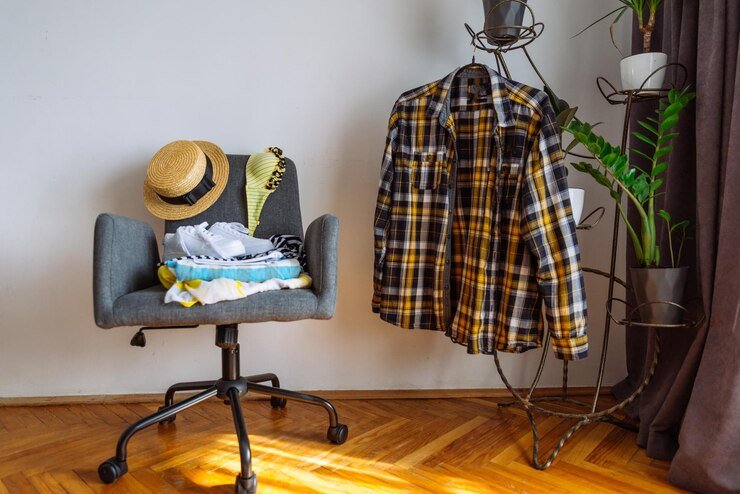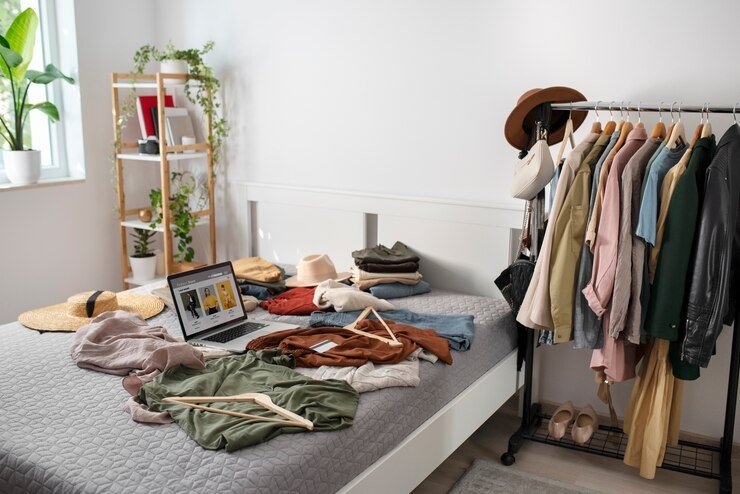Design has always been about storytelling—communicating ideas, emotions, and inspirations in different forms. But what happens when seemingly unrelated elements like food, furniture, and clothes intersect? The result is a world of versatile design that celebrates creativity, sustainability, and comfort.
This blog will explore how culinary culture inspires furniture and clothing trends, how sustainable practices tie them all together, and why these elements share a common goal of fostering comfort. Get ready to see your home and wardrobe in a whole new light.
The Influence of Food in Design
Food is more than just nourishment—it’s a source of inspiration. From vibrant color palettes to unique textures, the culinary world is influencing design trends in furniture and clothing.
Colors and Textures Inspired by Food
Think about the deep burgundy of ripe cherries, the soft creaminess of whipped butter, or the earthy tones of whole-grain bread. These natural hues are making their way into interior design and fashion. Designers are incorporating these warm, food-inspired colors into sofas, rugs, and garments, creating spaces and wardrobes that feel both appetizing and inviting.
Textures also play a significant role. Smooth, glossy finishes inspired by icing, rich velvety fabrics reminiscent of chocolate mousse, and rough, natural materials like jute mimicking the feel of a burlap coffee sack are just a few examples of how textures from the culinary world are translated into furniture and clothing.
Shapes and Patterns Borrowed from the Kitchen
Designers are also taking cues from the shapes and patterns found in food. Curved furniture mimics the organic, rounded forms of fruits and vegetables, while patterns inspired by latticed pies and spiral pasta have emerged in textiles. For instance, an arched dining chair might echo the silhouette of a croissant, seamlessly combining aesthetics with comfort.
The influence of food in design is about translating the sensory experience of eating into visual and tactile delight within the spaces we inhabit and the clothing we wear.

Sustainable Fashion and Furniture
Sustainability is no longer just a buzzword—it’s a lifestyle choice. Consumers are increasingly focusing on eco-friendly options in food, furniture, and clothes. After all, the choices we make in one area of life often reflect our values in others.
Eco-Friendly Practices in Food
Sustainable eating involves reducing food waste and sourcing products responsibly. Practices like “nose-to-tail” cooking and farm-to-table dining focus on using ingredients in ways that minimize environmental impact. Similarly, this ethos carries over into sustainable furniture and clothing design.
Recycling and Upcycling in Design
Furniture brands are now using reclaimed wood, recycled plastics, and repurposed metals to build stunning, eco-conscious pieces. At the same time, clothing brands are repurposing fabric scraps to create unique garments or employing circular fashion models where materials from old outfits are turned into new ones.
Shared Materials
Interestingly, there’s overlap between sustainable fabrics and furniture materials. Organic cotton and linen, used in clothing, are also used for upholstery. Bamboo, a highly sustainable material, finds its way into shirts and pants just as often as it does into furniture designs.
By integrating sustainable practices into every part of our lives, from what we eat to what we wear and where we live, we help create a healthier planet for future generations.
The Art of Food Presentation and Home Design
Food isn’t just about taste—how a meal is presented plays a vital role in the overall dining experience. Similarly, home design is about the “presentation” of your living space. The two share a surprising number of parallels.
Connecting Table Settings to Interior Design
A carefully plated dish is like a carefully curated room. Consider the contrasts of texture, the symmetry of placement, and the colors that come together to create a delightful aesthetic. Translating this into interior design, table settings can inspire home decor ideas.
For example:
- A minimalist plate arrangement can inspire a minimalist living room layout.
- Bright pops of color in garnishes can translate into vibrant throw pillows or wall accents.
Tips for a Cohesive Aesthetic
- Match tones: Use colors in your decor that mirror the tones of your favorite dishes. Warm golds, vibrant greens, and deep reds can create a cohesive palette.
- Play with centerpieces: Use food-themed decor, like fruit bowls or herb planters, to tie dining areas to living areas.
- Consider lighting: The warm glow of a candlelit dinner translates beautifully into warm-toned lighting in your home.
By thinking of your home the way a chef thinks about plating, you give your space a sense of harmony and individual style.
The Comfort Factor
Comfort is universal. Whether it’s a hearty meal, a cozy sofa, or a soft sweater, the goal is the same—to provide warmth, ease, and a sense of well-being.
Comfort in Food
Food comforts us emotionally and physically. From the rich creaminess of mashed potatoes to a hot bowl of soup on a cold evening, certain dishes transport us to a place of familiarity and relaxation.
Furniture for Comfort
Similarly, furniture plays a crucial role in creating a comfortable living environment. Oversized chairs, plush cushions, and ergonomic designs all prioritize how we feel in a space.
Clothing that Feels as Good as It Looks
Comfortable clothing has never been more important, especially as the boundaries between loungewear and streetwear continue to blur. Soft fabrics, loose fits, and thoughtful designs focus on making us feel as good as we look.
Comfort ties food, furniture, and clothing together, proving that great design isn’t just about aesthetics—it’s also about how it makes us feel.
How Food, Furniture, and Fashion Come Full Circle
Food, furniture, and clothing might seem like separate worlds, but at their core, they share common values—expression, connection, and comfort. Whether it’s a room inspired by a meal, clothes that reflect sustainable food choices, or home decor that invites conversation, the intersection of these three elements reveals a cohesive design philosophy worth exploring.
We’d love to know—how have food, furniture, or clothing influenced your personal style or home? Share your thoughts and designs in the comments or tag us in your creations.


